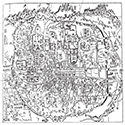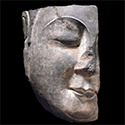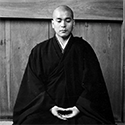|
|
| Show All 80 Results (Text Only) |
|
| The Spread of Buddhism Across Asia |
|
| Asian Art Museum of San Francisco
|
Understand, through the analysis of artifacts and maps, how Buddhism changed as it spread across Asia and came to reflect the countries that embraced it. Downloads include a slideshow and handout on Buddhist artifacts and a lesson plan.
Go to Museum Resource: https://education.asianart.org/resources/the-spread-of-buddhism-across-asia/ | |
|
|
| Temple, Palace, Scholar’s House: Three Settings of Traditional Korean Culture [PDF] |
|
| Asian Art Museum of San Francisco
|
This packet introduces teachers and other readers to several traditional settings of Korean culture: Buddhist temples, palaces, and scholar’s houses, as well as Confucian academies where scholars were trained. These settings provide a framework or backdrop for many of the historical art objects on display at the museum.
Go to Museum Resource: https://education.asianart.org/wp-content/uploads/sites/6/2019/09/Temple-Palace... | |
|
|
| The Third Mind: American Artists Contemplate Asia, 1860-1989 |
|
| Guggenheim Museum
|
The Third Mind: American Artists Contemplate Asia, 1860–1989 considers the dynamic impact of Asian art, literature, music, and philosophy on the development of American art. This guide for educators focuses on seminal American artists who took inspiration from Asia and reflected that engagement in their creative work. Teachers guides reflect the structure of the exhibition, which is divided into seven chronological and thematic sections, and selects a representative artist from each. Looking at and discussing these works with students can enhance their understanding of American art and how its development has been influenced by specific sources of Asian art and thought. Video and audio content available. See also: Teaching Materials.
Go to Museum Resource: https://www.guggenheim.org/exhibition/the-third-mind-american-artists-contempla... | |
|
|
| Tianlongshan Caves Project |
|
| Center for the Art of East Asia, University of Chicago
|
The Buddhist cave temples of Tianlongshan (Heavenly Dragon Mountain) are located in the mountains thirty-six kilometers southwest of Taiyuan city in the central part of Shanxi province. They exist today in a damaged state with so many of the sculptures now missing, that visitors to the caves cannot imagine how they looked in the past. Many of the sculptures from the caves are now in museums around the world. However, though the sculptures may be preserved and displayed, visitors to museums cannot understand them in their original historical, spatial, and religious contexts. For these reasons the Center for the Art of East Asia in the Department of Art History at the University of Chicago initiated the Tianlongshan Caves Project in 2013 to pursue research and digital imaging of the caves and their sculptures. The Project seeks to record and archive the sculptures and to compile data that can identify the fragments and their places of origin. In carrying this out, the Project aims to foster better understanding of the sculptural art, the history, and the meaning of the Tianlongshan Caves through creation of this website and through an exhibition of the results of the Project based on digital information.
Go to Museum Resource: https://tls.uchicago.edu/ | |
|
|
| Tibet |
|
| The Newark Museum
|
The most distinctive collection of Tibetan art in the Western Hemisphere is on view in eight permanent galleries. The centerpiece of which is a Buddhist Altar consecrated in 1990 by His Holiness the Fourteenth Dalai Lama. See also: Virtual Tour of a Tibetan Altar .
Go to Museum Resource: https://www.newarkmuseum.org/tibet | |
|
|
|
| Xiangtangshan Caves Project |
|
| Center for the Art of East Asia, University of Chicago
|
The Northern Qi dynasty (550-577) produced a large body of important works of art during its brief existence. A central achievement of the period is the complex of Buddhist caves of Xiangtangshan and their stone sculptures and engraved inscriptions, created near the Northern Qi capital with official sponsorship. Unfortunately, the cave shrines are now severely damaged and the sculptures and fragments of carvings from the cave sites scattered around the world. The Xiangtangshan Project has sought to acquire a better understanding the caves in broader narratives of the art and visual culture of the Northern Qi period and of the history of Buddhism in China. Its components and objectives were to 1) to conduct collaborative research, 2) to create a digital database of images and information on the caves and sculptures of Xiangtangshan, and 3) to present of the results of research with digital reconstruction of the caves, an exhibition, and international conferences. This website serves as a database of the project's results and a resource for future research. See also: supplemental website with Buddhist sutras and dedicatory inscriptions.
Go to Museum Resource: https://xts.uchicago.edu/ | |
|
|
| Zen Buddhism |
|
| Asian Art Museum of San Francisco
|
An introduction to Zen, a form of Buddhism that emphasizes seeking one’s own Buddha nature through meditation. Download a Zen glossary and activity.
Go to Museum Resource: https://education.asianart.org/resources/zen-buddhism/ | |
|
|
|
| Show All 80 Results (Text Only) |








